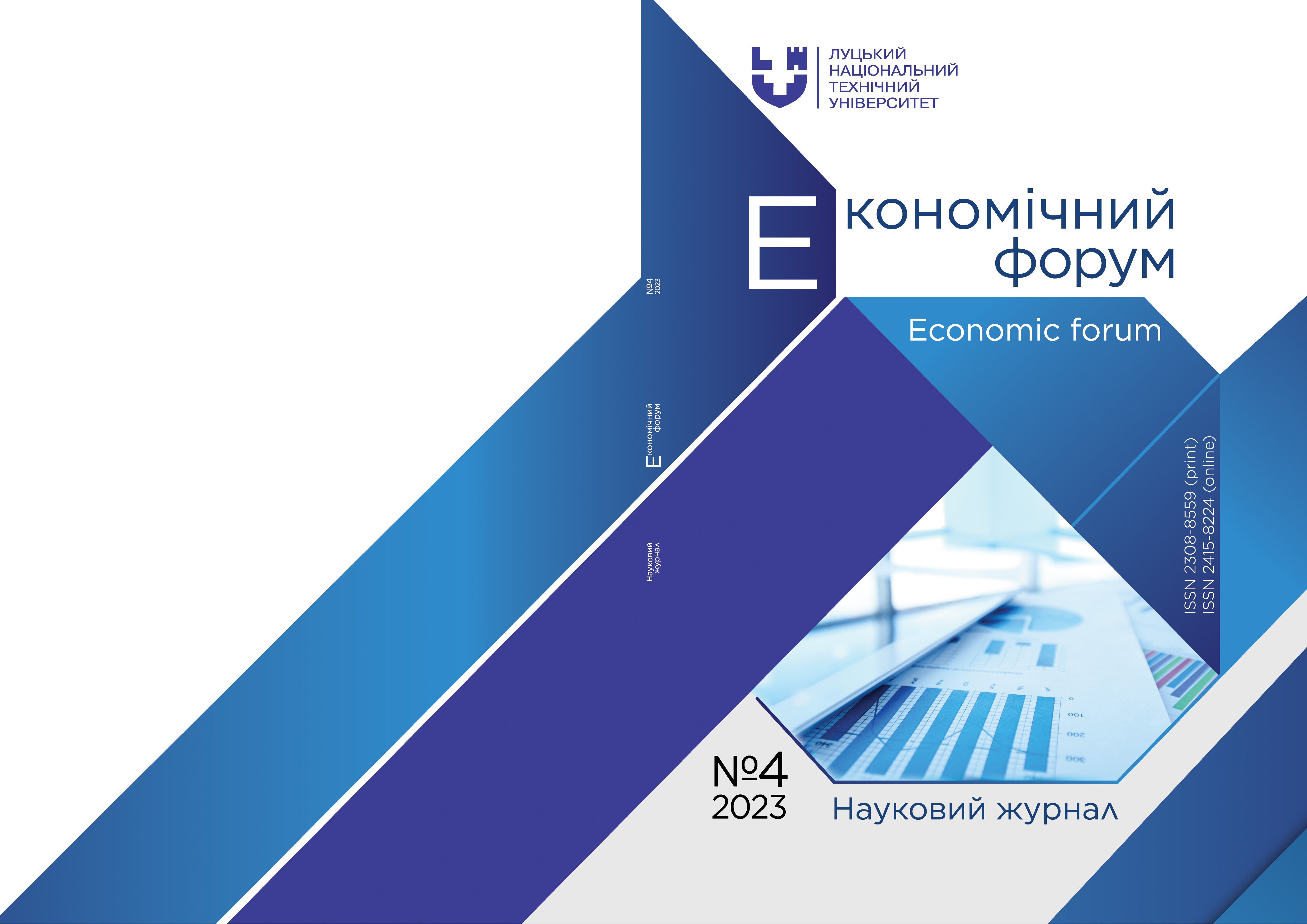THE INFLUENCE OF BEHAVIORAL ENCOURAGEMENT (MONITORING) ON THE CULTURE OF CONSUMPTION
Abstract
This article examines the important topic of the impact of consumer culture on the environment and the possibilities of reducing the negative effects of food production on the climate and resources. Statistical data confirming the growth of greenhouse gas emissions as a result of the production of products of animal origin have been studied.
The justification of the importance of radical changes in animal husbandry technologies and food models, which will contribute to reducing emissions and negative impact on the environment, has been made. In particular, the article considers the possibilities of behavioral economics in the formation of consumption habits of "eco-products" and emphasizes the importance of changes in the behavior of households.
Special attention is paid to the influence of informational messages on consumer choice in restaurant menus, which are aimed at stimulating consumers to make "eco-decisions" and choose plant-based dishes. The study points to the potential to change consumer habits through informational messages and nudges to action. For example, participants who viewed menus with such “nudge” messages were described as more likely to choose vegetarian dishes compared to those who viewed menus without them. Some of the messages, such as "small changes, big impact" and "join the movement", almost doubled the number of vegetarian dishes that were ordered and encouraged even more in the future.
The study confirms how significantly it is possible to stimulate changes in consumer habits and rational decision-making using simple and focused information. Behavioral nudging can help shape new habits and encourage people to change their consumption behavior, which is important for the preservation of the environment for future generations and for sustainable development.
Downloads
References
2. Blondin, S., S. Attwood, D. Vennard, and V. Mayneris (2022) “Environmental Messages Promote Plant-Based Food Choices: An Online Restaurant Menu Study” Working Paper. Washington, DC: World Resources Institute. Available online at https://doi.org/10.46830/wriwp.20.00137
3. IPCC (2022), Chapter 7: Agriculture, Forestry and Other Land Uses (AFOLU), Working Group III
4. Ivanova D., Stadler K., Steen-Olsen K. , Wood R., Vita G. , Tukker A. , Hertwich E.G. (2016) Environmental impact assessment of household consumption J. Ind. Ecol., 20, pp. 526-536
5. Kahneman, D., & Tversky, A. (1979). Prospect Theory: An Analysis of Decision under Risk. Econometrica, 47(2), 263–291. https://doi.org/10.2307/1914185
6. Kahneman, Daniel. (2011). Thinking, Fast and Slow . London: Penguin Books
7. Madrian, Brigitte C., and Dennis F. Shea. (2001) “The Power of Suggestion: Inertia in 401(k) Participation
8. OECD/FAO (2022), OECD-FAO Agricultural Outlook 2022-2031, OECD Publishing, Paris, https://doi.org/10.1787/f1b0b29c-en
9. OECD-FAO Agricultural Outlook (Edition 2021) https://data.oecd.org/agroutput/meat-consumption.htm
10. Thaler, R. H., & Sunstein, C. R. (2009). Nudge: Improving decisions about health, wealth, and happiness
11. Xu, X., P. Sharma, S. Shu, T.-S. Lin, P. Ciais, F.N. Tubiello, P. Smith, N. Campbell, and A.K. Jain. (2021) “Global Greenhouse Gas Emissions from Animal-Based Foods Are Twice Those of Plant-Based Foods.” Nature Food 2 (September): 1–9. https://doi.org/10.1038/s43016-021-00358-x
Copyright (c) 2024 Маркович Ірина

This work is licensed under a Creative Commons Attribution-NonCommercial 4.0 International License.


1.png)








